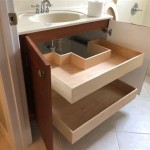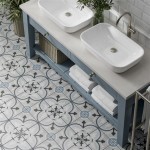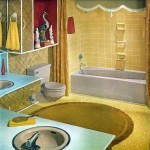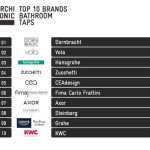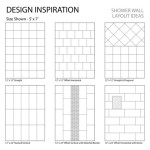Ada Bathroom Guidelines 2022
The Americans with Disabilities Act (ADA) is a landmark piece of legislation that ensures equal opportunities for individuals with disabilities. These standards apply to various aspects of public life, including public restrooms. The ADA Bathroom Guidelines 2022, updated to reflect current accessibility standards, provide detailed specifications for bathroom design and construction to ensure that individuals with disabilities can access and use these facilities safely and independently.
The 2022 guidelines encompass various aspects of bathroom design, from the dimensions of stalls and doorways to the placement of fixtures and grab bars. They are essential for architects, designers, and contractors who are responsible for creating accessible restrooms in new construction or renovation projects. Adherence to these standards is crucial to ensure compliance with the ADA and to create inclusive environments for all users.
Key Accessibility Features
The ADA Bathroom Guidelines 2022 specify numerous key accessibility features that are designed to cater to the needs of individuals with disabilities. These features include:
1. Accessible Stalls
Accessible stalls must meet specific dimensions to accommodate wheelchair users and individuals with mobility impairments. These dimensions include a minimum width of 60 inches, a depth of 56 inches, and a turning radius of 60 inches. The stall door must be at least 32 inches wide and swing outward to provide ample access.
2. Grab Bars
Grab bars are essential for stability and support, particularly for individuals with balance issues or weak grip strength. The 2022 guidelines require grab bars to be installed in specific locations within the stall, including near the toilet, the shower, and the entrance. These bars must be made of durable material and securely mounted to the wall.
3. Accessible Toilets
Accessible toilets must be positioned at a specific height to allow for easy access for wheelchair users. They must be equipped with features like grab bars and a lever-style handle for ease of use. The toilet seat height must be between 17 and 19 inches, and the toilet bowl must have a maximum rim height of 19 inches.
4. Accessible Sinks
Accessible sinks are designed to accommodate wheelchair users and individuals with mobility impairments. They must have a minimum depth of 17 inches and include features like knee clearance, back support, and a lever-style faucet. The sink must be positioned close to the wall to allow for easy access.
5. Accessible Mirrors
Accessible mirrors are placed at a lower height than standard mirrors to make them accessible for individuals in wheelchairs. They should be placed at a height of 40 inches from the floor with a clear space of at least 30 inches below the bottom edge.
6. Accessible Shower Stalls
Accessible shower stalls are typically equipped with roll-in access, featuring a low threshold and a minimum width of 36 inches. They must also include grab bars, seating, and a spray nozzle that can be adjusted to different heights.
7. Adequate Clearance
The 2022 guidelines emphasize the importance of adequate clearance and maneuvering space within the restroom. The design should allow for easy access and movement for wheelchair users and individuals with mobility impairments. The width of doorways and hallways must be sufficient to accommodate wheelchairs, and all fixtures should be placed at a distance that allows for easy access.
8. Signage and Wayfinding
Clear and accessible signage is essential to help individuals with disabilities navigate the restroom. The 2022 guidelines recommend using Braille and tactile signage to provide information about the location of accessible restrooms and their features. Signage must be placed strategically to ensure visibility and readability from a reasonable distance.
9. Lighting and Contrast
Lighting plays a crucial role in accessibility, especially for individuals with visual impairments. The 2022 guidelines recommend using appropriate lighting levels in the restroom to ensure adequate visibility. This includes a minimum illuminance level of 20 foot-candles for the general area and 50 foot-candles for the mirror. The bathroom should also incorporate a high contrast between the floor and the walls to assist individuals with visual impairments.
10. Color and Material
The 2022 guidelines specify color and material considerations for various restroom fixtures. The use of non-slip flooring is essential to prevent falls and injuries. The color of the floors, walls, and fixtures should provide an appropriate level of contrast to assist individuals with visual impairments.
Promoting Safety and Inclusion
The ADA Bathroom Guidelines 2022 serve as a vital framework for creating safe and inclusive restrooms for all individuals, regardless of their abilities. They are essential for ensuring that public restrooms are accessible to everyone and promoting equal opportunities for individuals with disabilities. The guidelines foster a more inclusive society by ensuring that everyone can use these facilities safely and independently.

Ada Bathroom Requirements Commercial Buildings 2024 Tubtoday

2024 International Plumbing Code Ipc Icc Digital Codes

Design Accessible Bathrooms For All With This Ada Restroom Guide Archdaily

Ada Accessibility Guidelines For Toilet Saunas Washer Dryer Rooms

Ada Bathroom Requirements Restroom Space And Toilet Compartments Laforce Llc

Ada Compliant Bathroom Sinks And Restroom Accessories Laforce Llc

Ada Bathroom Requirements Commercial Buildings 2024 Tubtoday

Design Accessible Bathrooms For All With This Ada Restroom Guide Archdaily

Ada Bathroom Planning Guide Mavi New York

Ada Bathroom Requirements Commercial Buildings 2024 Tubtoday
